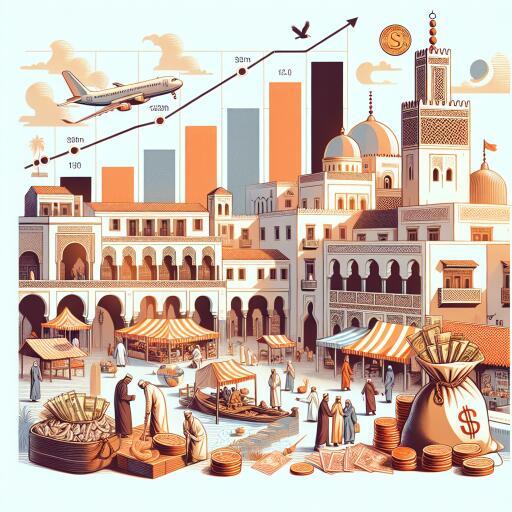Morocco’s Remittances Reach Historic $11.8 Billion in 2023
In an impressive display of financial solidarity, Moroccans living abroad have sent a staggering $11.8 billion back to their home country in 2023. This remarkable figure is outlined in the World Bank’s latest Migration and Development Brief, marking a significant increase of 5.2% from the previous year. This surge has positioned Morocco as the second-largest recipient of remittances in the Middle East and North Africa (MENA) region, trailing only behind Egypt.
The World Bank highlights the critical role remittances play in the Moroccan economy, accounting for 8.2 percent of the nation’s Gross Domestic Product (GDP). “Remittance inflows have consistently surpassed foreign direct investment (FDI) inflows, establishing themselves as a pivotal component of Morocco’s economic framework,” the report explains.
The report sheds light on the resilience of remittance flows throughout 2023, notably in the aftermath of the devastating earthquake that struck the High Atlas Mountains in western Morocco in September. This natural disaster resulted in the loss of thousands of lives, yet it also underscored the unwavering support of the Moroccan diaspora during times of crisis. This phenomenon is reflective of the counter-cyclical nature of remittance flows, which tend to spike following natural disasters in migrants’ home countries.
Remittance Trends in the MENA Region
Despite the robust growth of remittances in Morocco, the MENA region as a whole witnessed a 15% decline in remittances in 2023, totaling USD 55 billion. This downturn primarily affected Egypt, contributing to the regional decline. “The challenging circumstances facing the region’s oil-importing countries, such as Egypt, Jordan, Lebanon, Morocco, and Tunisia, will continue to impact remittance flows,” the report forecasts. Conversely, oil-exporting nations like Iraq and Algeria are anticipated to benefit from the ongoing surge in hydrocarbon prices.
Looking ahead to 2024, the World Bank remains optimistic, predicting a 4.3% rebound in remittances to the MENA region. This forecast is a glimmer of hope amidst the current economic uncertainties.
Global Remittance Trends
On a global scale, remittances to low- and middle-income countries demonstrated strong growth in the years leading up to 2023. However, this year witnessed a slight dip, with remittances falling to an estimated USD 656 billion, representing a modest growth rate of 0.7%. This variation in growth rates across regions reveals the dynamic nature of global remittances, which continue to serve as a vital source of external financing for developing countries. In 2023, remittances not only exceeded foreign direct investment (FDI) but also official development assistance (ODA), bolstering the current accounts of many nations grappling with food insecurity and heavy debt burdens.
As we move into 2024, the World Bank projects a quicker growth rate of 2.3% for remittances to low- and middle-income countries, although this growth is expected to vary by region. This forecast underscores the continued importance of remittances as a financial lifeline for developing countries around the world.
The steady flow of remittances to Morocco in 2023 not only exemplifies the strong ties between Moroccans living abroad and their homeland but also highlights the critical role these financial contributions play in supporting the nation’s economy, particularly in times of crisis. As Morocco continues to navigate the aftermath of natural disasters and economic challenges, the unwavering support of its diaspora remains more vital than ever.
